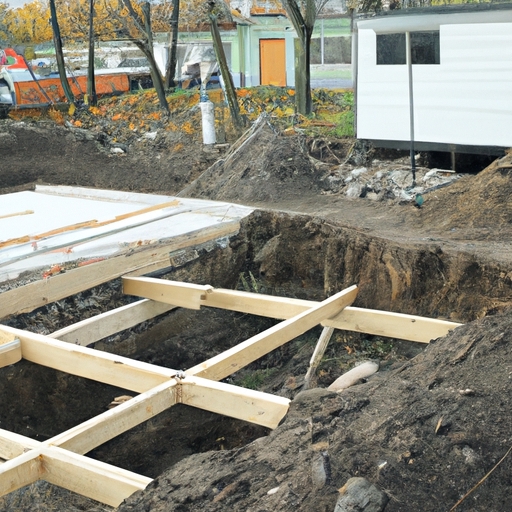
How to Prevent Costly Damage in Phar: Expert Tips for Choosing the Right Foundation Repair Solution!
Posted by on 2024-06-27
Preventing Costly Damage in Pharmacy: Expert Tips for Choosing the Right Foundation Repair Solution
Pharmacies are vital establishments that not only dispense medication but also serve as hubs for health-related advice and services. However, like any other building, pharmacies can suffer from foundation problems that may lead to costly damages if not addressed promptly and properly. The integrity of a pharmacy is critical to its operation; hence choosing the right foundation repair solution is paramount. In this essay, we will explore expert tips on how to prevent expensive damages through appropriate foundation maintenance and repair.
Firstly, it's essential to recognize the signs of potential foundation issues early on. Cracks on walls, floors that slope or have gaps, doors that don't close properly, and windows that stick are all indicators that there might be underlying problems with the building’s foundation. In pharmacies where precision and cleanliness are crucial, even minor shifts can affect operations significantly.
Once you've identified a potential problem, conducting a thorough inspection is the next step. This should ideally be done by professional structural engineers who specialize in diagnosing foundation issues. They will assess the extent of damage and determine the root cause, which could range from soil conditions and moisture levels to poor construction practices or natural events like earthquakes.
After an assessment has been made, exploring your repair options comes into play. There are various methods for repairing foundations including underpinning with piers or pilings (to stabilize sinking foundations), slab jacking (to lift and level concrete slabs), as well as sealing cracks and waterproofing (to prevent water damage). Each method has its advantages depending on the type of damage encountered.
Choosing the right solution involves considering several factors such as cost-effectiveness over time, disruption to pharmacy operations during repair work, longevity of repairs, and impact on property value. It's also important to think about future prevention; selecting materials that are more resistant to environmental changes can help mitigate similar issues down the line.
Working with experienced professionals is key when implementing your chosen solution. Reputable contractors who provide warranties on their workmanship give peace of mind knowing that quality repairs have been made. Additionally, they can guide you through necessary local permits or regulations associated with structural repairs in commercial properties.
Furthermore, preventative measures should become part of routine maintenance for any pharmacy owner. Regular inspections by qualified professionals can help catch new or recurring issues before they become major concerns. Implementing good drainage systems around your property reduces risks associated with water damage – a common culprit in foundation deterioration.
Another aspect often overlooked is landscaping near your building’s perimeter; trees planted too close can lead to roots interfering with foundational structures while inadequate grading can facilitate unwanted water pooling around your establishment.
Lastly but importantly is ensuring proper insurance coverage for your property so it includes protection against foundational failures; this adds an additional layer of financial safety against unforeseen extensive repairs.
In conclusion, preventing costly damages in pharmacies requires vigilance in recognizing symptoms early on paired with prompt action when dealing with foundational concerns. By choosing an appropriate repair solution tailored specifically for each situation – taking into account both immediate needs and long-term considerations – pharmacy owners can protect their investments effectively while maintaining operational standards required within healthcare provision environments.
Remembering always to engage reputable experts throughout these processes helps ensure successful outcomes— safeguarding one's business against interruptions while preserving public trust in these vital community institutions.